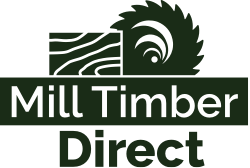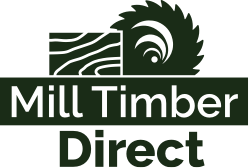Timber or Composite Decking? Things to Consider when Choosing Your Decking

You've made the decision to add decking to your garden, but another big decision now awaits: timber or composite? These two types of decking each have their own pros and cons. When planning a garden decking project, it is helpful to be aware of these and consider them alongside your own aesthetic goals, the size and shape of your garden, your budget and how much maintenance work you are prepared to commit to.
What are the main differences between timber and composite decking?
Timber decking is made from natural wood, while composite decking is a man-made product created from wood fibres, plastic and some bonding agents.
What are the benefits of timber decking?
- Timber deck has all the beauty and charm of wood, creating an aesthetically pleasing natural look for your garden. The wood can also be stained to the colour of your choice.
- This type of decking is more environmentally friendly as wood is a sustainable material that can be recycled. The origin of the wood can also be traced through FSC® or PEFC Chain of Custody certification, to make sure it’s from a sustainable source.
- There is a wide range of wood varieties that can be used for decking so you're likely to find one to suit your budget.
- Timber is naturally hard wearing. Expect a lifespan of around 10 to 15 years for most softwoods and around 50 years for some hardwoods.
- Timber boards are easier to install than their composite counterparts and can be laid in any application quickly and fairly easily, particularly for commercial or large areas.
- Anti-slip options are available.
- Timber can be treated with fire retardancy to meet Building Regulations.
However, you need to consider:
- Over time, the colour of the timber will fade.
- Stained wood will require regular - possibly annual - upkeep.
What are the benefits of composite decking?
- Composite deck boards are a good choice if you are seeking a uniform look - the boards are manufactured and therefore have a very consistent appearance.
- There is a choice of colours and wood grain styles available for composite boards, so you can choose the style that complements your home and garden.
- Composite boards hold their colour well and so do not need the same regular staining and painting as timber decking.
- Composite is easier to clean - simply brush away debris, wash with a brush and soapy water and hose it down.
- Composite is hardwearing decking and most companies offer a 15-year warranty to give you protection and peace of mind.
With composite decking, also have a think about…
- Composite boards are not suitable for all gardens - they need to be laid on a slight slope to ensure water drains correctly. This automatically rules it out for some garden types such as roof gardens.
- Composite boards can be trickier to install than timber; it is very important to follow the manufacturer’s installation instructions to maximise the lifetime of the product – there is little flexibility in the installation method and a professional installation is recommended.
- Composite is more expensive than timber and there is less choice available compared to timber boards in terms of wood and budget.
- The boards expand in length in warm weather, so space needs to be left during installation to allow for this expansion. Some adjustment of expanded boards may be needed as regularly as once a year.
- Fire retardancy adds significant cost to composite decking.
Remember that both types of decking will benefit from regular cleaning to keep them looking good. But they will also give your garden a feel unlike no other! Take a look at decking and make your choice today!








